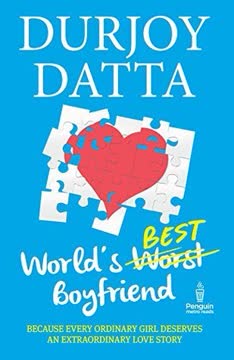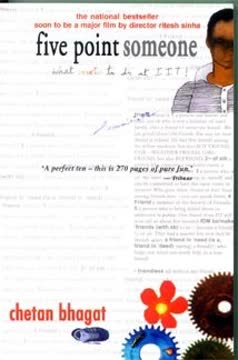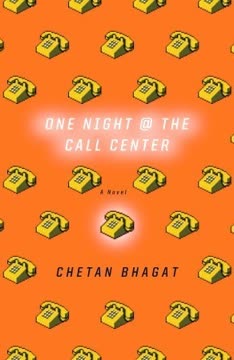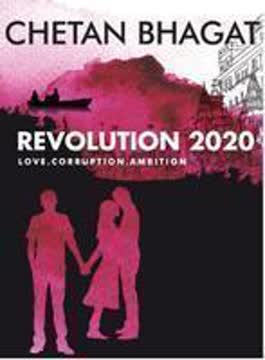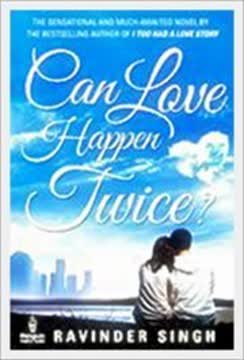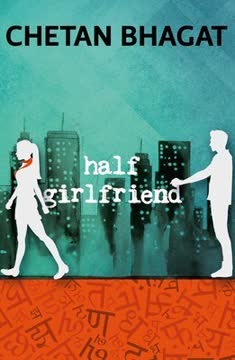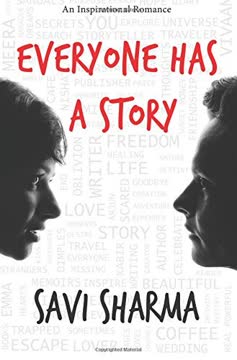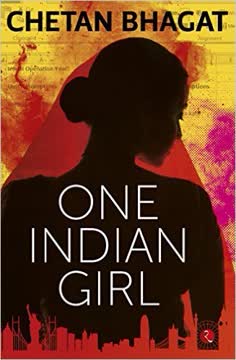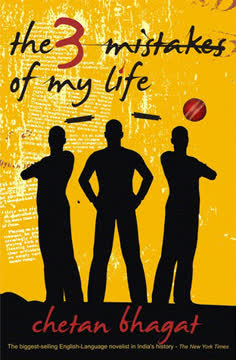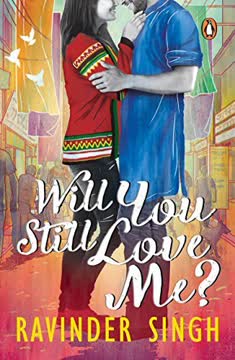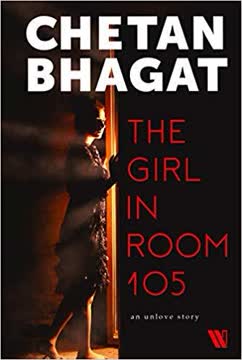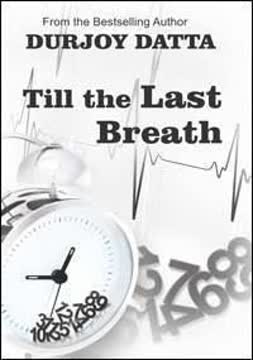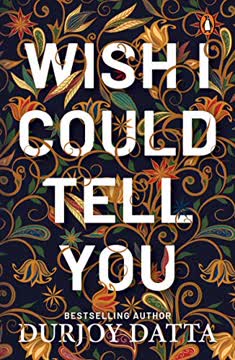Plot Summary
Broken Homes, Broken Hearts
Dhruv, a sensitive boy, is ostracized at school after his parents' messy divorce and his mother's rumored affair with the principal. He is bullied, isolated, and angry, feeling abandoned by both parents. Meanwhile, Aranya, a bright girl with vitiligo, faces relentless discrimination and loneliness. Her family, struggling financially and emotionally, treats her as a burden. Both children internalize their pain, learning early that the world is cruel to the different and the broken. Their first encounter is hostile—Dhruv laughs at Aranya's skin, deepening her sense of alienation. Yet, their shared status as outsiders plants the seeds for a future connection.
The Girl with Patches
Aranya's life is defined by her skin condition, which makes her a pariah among peers and even within her family. She is intelligent, witty, and fiercely independent, but her self-worth is battered by constant reminders of her "ugliness." She finds solace in horror movies, books, and academic achievement, but yearns for validation and love. Her resilience is tested daily, but she learns to mask her pain with sarcasm and ambition. Her family's love is conditional, tied to her ability to succeed and not embarrass them. This early trauma shapes her into a fighter, but also leaves her desperate for genuine affection.
Outcasts Find Each Other
Dhruv and Aranya, both outcasts, slowly form a bond at school. They share lunches, secrets, and dreams, finding comfort in each other's company. Their friendship is a sanctuary from the cruelty of classmates and the indifference of adults. They promise to protect each other, vowing never to leave. For a brief time, they are happy, imagining a future where their differences don't matter. But the world intrudes—rumors, parental strife, and their own insecurities threaten to tear them apart. Their connection is deep, but fragile, built on mutual need and the hope that someone might finally choose them.
Promises and Betrayals
Caught in a moment of adolescent curiosity and rebellion, Dhruv and Aranya are discovered together in a compromising situation at school. Under pressure from parents and teachers, Aranya lies to protect herself, blaming Dhruv for everything. Dhruv, feeling betrayed by the only person he trusted, retaliates with a cruel public humiliation, exposing Aranya's skin condition to the entire school. Both are expelled, and their lives spiral into years of resentment and self-loathing. The betrayal marks them both, turning love into hate and setting the stage for a lifetime of unresolved tension.
The Kiss That Ruined
The fallout from the school scandal is devastating. Dhruv's family fractures further, and he grows up angry, mistrustful, and vengeful. Aranya becomes even more withdrawn, her self-esteem crushed by public shaming and her family's disappointment. Both carry the scars into adolescence, unable to forgive each other or themselves. Their first love becomes their greatest wound, shaping their attitudes toward trust, intimacy, and self-worth. The incident becomes a legend in their community, a cautionary tale about difference and desire.
Years of Resentment
Six years later, Dhruv and Aranya are in college, still haunted by their shared past. Dhruv has become a brooding, volatile young man, using relationships and violence to mask his pain. Aranya is a driven, high-achieving student, but her confidence is brittle, and she remains obsessed with her appearance and others' opinions. Both are successful in their own ways, but emotionally stunted, unable to form healthy attachments. Their paths cross again at university, reigniting old animosities and unresolved feelings.
College: New Beginnings, Old Wounds
At Delhi Technological University, Dhruv and Aranya are forced into proximity. Aranya quickly rises to prominence, impressing professors and peers with her intellect and leadership. Dhruv, meanwhile, struggles to find his place, his reputation as a troublemaker preceding him. Their interactions are charged with sarcasm, competition, and unspoken longing. Both enter new relationships—Dhruv with the pretty but insecure Ritika, Aranya with the enigmatic Professor Raghuvir. Yet, their connection remains electric, each unable to move on from the other.
Rivalries and Reunions
The college setting becomes a battleground for Dhruv and Aranya's unresolved issues. They sabotage each other's academic and social standing, using wit, manipulation, and even sabotage. Their friends, especially the comic-relief Sanchit, are caught in the crossfire. Meanwhile, Aranya's relationship with Raghuvir offers her the stability and validation she craves, but lacks passion. Dhruv's possessiveness over Ritika masks his true feelings for Aranya. The rivalry escalates, with both determined to prove their superiority and independence.
Games of Power and Pain
As their rivalry intensifies, Dhruv and Aranya engage in increasingly elaborate schemes to hurt and outdo each other. Assignments are sabotaged, reputations smeared, and secrets weaponized. Yet, beneath the hostility lies a desperate need for acknowledgment and love. Both are trapped in cycles of self-destruction, unable to break free from the patterns established in childhood. Their friends and lovers become collateral damage in their war, and the line between love and hate blurs dangerously.
Love, Lies, and Revenge
A series of confrontations and confessions brings their true feelings to the surface. Aranya, feeling cornered by her family and Raghuvir's expectations, orchestrates a scheme to expose Raghuvir's own flaws, using a fake online persona to tempt him. Dhruv, meanwhile, is pushed to the brink by Aranya's apparent happiness and his own loneliness. Both realize that their attempts at revenge have only deepened their pain. In a moment of vulnerability, they admit their love for each other, but circumstances and pride keep them apart.
The Professor's Proposal
Raghuvir, recognizing Aranya's brilliance and vulnerability, proposes a relationship based on mutual respect, ambition, and companionship. He offers her a future free from her family's control and the chaos of her past with Dhruv. Aranya is tempted by the stability and validation Raghuvir provides, but is haunted by her unresolved feelings for Dhruv. The choice between safe, rational love and passionate, destructive love becomes the central dilemma.
Choices and Consequences
Aranya must choose between the comfort of a life with Raghuvir and the unpredictable, all-consuming love she shares with Dhruv. Both options come with risks—Raghuvir's love is steady but lacks fire, while Dhruv's is intense but potentially ruinous. Aranya's decision is complicated by her family's expectations, her own ambitions, and the scars of her past. The consequences of her choice will shape not only her future, but also Dhruv's and Raghuvir's.
Schemes, Scars, and Sacrifice
With the help of Sanchit, Aranya sets a trap for Raghuvir, exposing his susceptibility to temptation and freeing herself from the obligation to stay with him. Meanwhile, Dhruv, devastated by Aranya's apparent happiness, spirals into self-destruction. Both are forced to confront their deepest fears and insecurities. In the process, they realize that true love requires vulnerability, forgiveness, and the courage to let go of the past.
The Final Test
As Aranya prepares to leave for a prestigious internship abroad, Dhruv faces the prospect of losing her forever. Sanchit intervenes, orchestrating a final confrontation between the two. In a dramatic airport scene, Dhruv and Aranya lay bare their feelings, confessing their love and acknowledging the pain they have caused each other. Their families, initially obstacles, become unwitting witnesses to their reconciliation.
Confessions and Collisions
In the presence of their families and former lovers, Dhruv and Aranya confess the full extent of their history—the betrayals, the lies, the love that never died. Raghuvir's own flaws are exposed, and he exits gracefully, recognizing that Aranya's heart belongs to Dhruv. Aranya's parents, finally understanding her struggles, offer reluctant support. The cycle of pain is broken, and the possibility of healing emerges.
Goodbye, Not Forever
Aranya leaves for her new life abroad, but this time with the promise of a future with Dhruv. Both have grown, learning to accept themselves and each other, flaws and all. Their love, once destructive, becomes a source of strength and hope. The story ends not with a fairy-tale resolution, but with the realistic acknowledgment that love is messy, imperfect, and worth fighting for.
The Trap and the Truth
The elaborate schemes to test and trap each other—fake online personas, staged betrayals, and public confrontations—ultimately reveal the futility of seeking validation through manipulation. Both Dhruv and Aranya learn that true love cannot be engineered or forced; it must be chosen freely, with all its risks and uncertainties. The truth, once revealed, sets them free to pursue happiness on their own terms.
Love Wins, Flawed and Fierce
In the end, Dhruv and Aranya choose each other, not because they are perfect, but because they are perfectly imperfect for one another. Their journey is marked by pain, betrayal, and self-discovery, but also by resilience, forgiveness, and the courage to love fiercely. The story closes with the promise of a new beginning, where love is not a cure, but a choice—a daily act of faith in oneself and in another.
Characters
Dhruv Roy
Dhruv is a product of a broken home, carrying deep scars from his parents' divorce and his mother's abandonment. His early experiences of betrayal and humiliation make him defensive, aggressive, and mistrustful. He seeks validation through physical strength, relationships, and acts of rebellion, but beneath the bravado lies a desperate need for love and acceptance. His relationship with Aranya is both his salvation and his undoing—she is the only person who sees his vulnerability, and the only one who can truly hurt him. Over the course of the story, Dhruv evolves from a vengeful, self-destructive boy to a man capable of forgiveness, sacrifice, and genuine love.
Aranya Gupta
Aranya's life is shaped by her struggle with vitiligo and the resulting social ostracism. She is fiercely intelligent, ambitious, and independent, but her self-esteem is fragile, battered by years of rejection and conditional love from her family. She craves validation, oscillating between pride in her achievements and shame about her appearance. Her relationship with Dhruv is both a source of pain and empowerment—he is the first to love her for who she is, but also the first to betray her. Aranya's journey is one of self-acceptance, learning to define her worth on her own terms and to choose love without losing herself.
Raghuvir
A prodigy turned professor, Raghuvir is brilliant but emotionally scarred by past relationships. He offers Aranya stability, mentorship, and a pragmatic vision of love based on mutual respect and ambition. However, his inability to fully commit emotionally and his susceptibility to temptation reveal his own vulnerabilities. Raghuvir represents the safe, rational choice for Aranya, but ultimately cannot offer the passion and acceptance she craves. His exit from Aranya's life is graceful, acknowledging that love cannot be engineered or forced.
Ritika
Ritika is Dhruv's college girlfriend, chosen for her conventional beauty and social status. She is sweet, loyal, and eager to please, but ultimately becomes a pawn in Dhruv and Aranya's emotional warfare. Her relationship with Dhruv is marked by possessiveness and insecurity, and she is unable to compete with the intensity of his feelings for Aranya. Ritika's arc highlights the collateral damage caused by unresolved trauma and the dangers of seeking validation through others.
Sanchit
Sanchit is the story's wildcard—a witty, irreverent friend who oscillates between comic relief and secret mastermind. He is fiercely loyal to both Dhruv and Aranya, often playing double agent to push them toward reconciliation. His own loneliness and outsider status make him empathetic to their struggles, and his interventions are crucial in orchestrating the final reunion. Sanchit's presence underscores the importance of friendship, humor, and perspective in navigating life's messiness.
Aranya's Father
A symbol of traditional values and conditional love, Aranya's father is harsh, demanding, and emotionally distant. His approval is tied to Aranya's achievements, and his disappointment is expressed through anger and violence. However, as the story progresses, he is forced to confront his own failings and the consequences of his actions. His eventual acceptance of Aranya's choices marks a turning point in her journey toward self-acceptance.
Aranya's Mother
Aranya's mother is a background figure, often overshadowed by her husband's dominance. She is anxious, fearful, and complicit in Aranya's suffering, but also quietly supportive in moments of crisis. Her inability to protect Aranya reflects the limitations of women in patriarchal families, but her eventual empathy offers a glimmer of hope for reconciliation.
Dhruv's Father
Dhruv's father is a cautionary figure—a man destroyed by loss, addiction, and regret. His inability to fight for his family or himself leaves Dhruv with a legacy of pain and mistrust. Yet, in his final days, he offers Dhruv a lesson in forgiveness and the importance of letting go. His death is a catalyst for Dhruv's transformation, forcing him to confront his own fears and desires.
Satvika
Satvika is a minor but pivotal character, representing Dhruv's pattern of seeking validation through relationships and revenge. Her brief relationship with Dhruv ends in betrayal and public humiliation, mirroring the dynamics between Dhruv and Aranya. Satvika's presence underscores the destructive potential of unresolved trauma and the need for closure.
Farah Iqbal (Fake Persona)
Farah is a fictional online persona created by Aranya and Sanchit to test Raghuvir's fidelity. She embodies the ideal of perfection—beautiful, accomplished, and unattainable. Her interactions with Raghuvir expose his vulnerabilities and provide Aranya with the exit strategy she needs. Farah's existence highlights the dangers of seeking validation through illusion and the importance of authenticity in relationships.
Plot Devices
Dual Narratives and Shifting Perspectives
The novel alternates between Dhruv and Aranya's perspectives, allowing readers to experience their inner turmoil, motivations, and misunderstandings. This dual narrative structure deepens empathy and highlights the subjectivity of truth. The shifting viewpoints also create dramatic irony, as readers are privy to secrets and intentions unknown to the characters themselves.
Betrayal and Revenge as Cycles
Betrayal and revenge are recurring motifs, driving the plot and character development. Each act of hurt is met with retaliation, creating a cycle of pain that can only be broken by vulnerability and forgiveness. The escalation of schemes and counter-schemes underscores the futility of seeking validation through dominance or humiliation.
Social Stigma and Conditional Love
The novel explores the impact of social stigma—divorce, skin conditions, nonconformity—on individual identity and relationships. Both Dhruv and Aranya are shaped by the conditional love of their families and the judgment of their peers. Their journey toward self-acceptance is a rebellion against these external pressures.
Foreshadowing and Symbolism
Early incidents—Dhruv's laughter at Aranya, the promise to never leave, the first betrayal—foreshadow later conflicts and resolutions. Objects like the lunchbox, the paperweight, and the fake online profile serve as symbols of trust, violence, and illusion. The recurring motif of hands—holding, hitting, helping—reflects the dual capacity for harm and healing.
The "Trap" and the "Test"
Both protagonists, with Sanchit's help, create elaborate traps—fake personas, staged confrontations, public humiliations—to test the loyalty and love of others. These devices ultimately backfire, revealing that love cannot be forced or proven through manipulation. The final test is not of intellect or cunning, but of courage and vulnerability.
Analysis
Durjoy Datta's The World's Best Boyfriend is a raw, unflinching exploration of love, pain, and the long shadow of childhood trauma. Through the intertwined journeys of Dhruv and Aranya, the novel exposes the ways in which early wounds shape our capacity for trust, intimacy, and self-worth. The story rejects the fantasy of perfect love, instead embracing the messiness, imperfection, and resilience required to build real connection. It critiques the cruelty of social stigma and conditional family love, while celebrating the power of vulnerability, forgiveness, and self-acceptance. Ultimately, the novel argues that love is not a cure, but a choice—a daily act of courage to see and be seen, to hurt and to heal, to fight for happiness even when the world insists you don't deserve it. In a world obsessed with appearances and achievement, Datta's characters remind us that the truest victories are won not by crushing others, but by daring to love, flawed and fierce.
Last updated:
FAQ
Synopsis & Basic Details
What is The World's Best Boyfriend about?
- Childhood trauma's enduring impact: The novel follows Dhruv and Aranya, two individuals deeply scarred by their childhoods. Dhruv grapples with the fallout of his parents' messy divorce and his mother's abandonment, leading to deep-seated trust issues and a volatile nature. Aranya, afflicted with vitiligo, endures relentless social ostracism and conditional love from her family, fostering a fierce ambition alongside profound insecurity.
- A complex, fated reunion: Years after a devastating betrayal in school, Dhruv and Aranya unexpectedly reunite at Delhi Technological University. Their past animosity quickly reignites, evolving into a fierce rivalry fueled by unresolved pain, a desperate need for validation, and an undeniable, if destructive, attraction.
- Navigating love, ambition, and revenge: As they navigate college life, new relationships (Dhruv with Ritika, Aranya with Professor Raghuvir), and academic pressures, their intertwined destinies force them to confront their deepest insecurities. The story explores their elaborate schemes of manipulation and revenge, ultimately pushing them towards a raw, imperfect understanding of love and self-acceptance.
Why should I read The World's Best Boyfriend?
- Raw, unflinching emotional depth: Durjoy Datta delves into the messy, often uncomfortable realities of love and human psychology, offering a narrative that doesn't shy away from the darker aspects of relationships and personal trauma. Readers seeking a story with genuine emotional complexity and flawed, relatable characters will find it compelling.
- Critique of societal pressures: The novel provides a sharp commentary on Indian middle-class societal norms, including the stigma of divorce, the obsession with conventional beauty, and the immense pressure on youth to achieve academic and professional success. It challenges readers to reflect on how external judgments shape internal self-worth.
- Unconventional, fierce love story: Beyond a typical romance, this book explores a love born from shared pain, evolving through rivalry, betrayal, and eventual forgiveness. It's a testament to the idea that love isn't always pretty or perfect, but can be fierce, resilient, and deeply transformative, making it a unique read for those tired of conventional narratives.
What is the background of The World's Best Boyfriend?
- Indian middle-class societal context: The story is deeply embedded in the cultural fabric of urban India, highlighting the intense pressure on children for academic success, the stigma associated with divorce ("No one knew of such a case in their middle-class neighbourhood. Divorces, even in television soaps, were cause for much distress."), and the pervasive influence of family reputation. This background fuels much of Aranya's ambition and Dhruv's rebellious nature.
- Emergence of digital communication: The narrative subtly incorporates the rise of social media and digital communication (Skype, Facebook, WhatsApp, email) as integral tools for both connection and manipulation. Aranya's fake persona, Farah Iqbal, and the sharing of incriminating videos ("Did you see this?" the Jaundice Girl came up and fired up a video on her cellphone. It was Aranya and Raghuvir stumbling through the corridors.") demonstrate how technology amplifies social dynamics and personal vendettas.
- Competitive engineering college environment: Delhi Technological University (DTU) serves as a microcosm of ambition and cutthroat competition. The emphasis on internships, academic ranks, and securing prestigious jobs abroad ("I can apply to MIT after my graduation.") reflects the high-stakes environment, which further intensifies the characters' personal struggles and rivalries, particularly for scholarship students like Aranya.
What are the most memorable quotes in The World's Best Boyfriend?
- "Women. They lie.": This cynical observation from Dhruv's father (Chapter 7) becomes a deeply ingrained belief for young Dhruv after Aranya's initial betrayal. It encapsulates his profound mistrust of women and foreshadows his later struggles with commitment and vulnerability, driving his need for control in relationships.
- "Hate doesn't push you that far, only love does.": Uttered by Sanchit (Chapter 26) after Dhruv burns the assignments, this line cuts through Dhruv's proclaimed hatred for Aranya, hinting at the deep, complex emotions underlying his destructive actions. It's a pivotal insight into the blurred lines between love and hate that define their relationship.
- "Love is a conscious decision to be destroyed.": Sanchit's philosophical musing (Chapter 58) on the nature of true love encapsulates the novel's core theme. It suggests that genuine love is not about perfection or comfort, but about embracing vulnerability, pain, and the willingness to be utterly undone by another person, perfectly describing Dhruv and Aranya's tumultuous journey.
What writing style, narrative choices, and literary techniques does Durjoy Datta use?
- Dual Narratives and Shifting Perspectives: The novel primarily employs alternating first-person narratives from Dhruv and Aranya, offering intimate access to their internal monologues, fears, and motivations. This choice creates dramatic irony, as readers often understand the characters' true feelings and misunderstandings before they do, deepening the psychological depth of characters.
- Raw, colloquial dialogue and internal monologues: Datta's writing is characterized by its direct, often unpolished language, reflecting the youthful, intense emotions of the characters. Their internal monologues are particularly vivid, revealing their self-loathing, vengeful fantasies, and desperate longing, such as Aranya's internal debate: "You're not ugly! Looks aren't the only thing. No, I'm ugly! Look at the other girls from school..." (Chapter 10).
- Pop culture references and fast pacing: The narrative is peppered with contemporary pop culture allusions (e.g., "Christian Grey," "Oprah," "Taylor Swift song," "Breaking Bad," "Temple Run"), grounding the story in a modern, relatable context for young adult readers. The fast-paced plot, with its rapid shifts between emotional highs and lows, keeps the reader engaged, mirroring the volatile nature of the characters' lives.
Hidden Details & Subtle Connections
What are some minor details that add significant meaning?
- Dhruv's Converse shoes as a symbol of his state: Dhruv's "dirty Converse shoes, worn beyond their years, a fake tear streaking down his face" (Chapter 9) initially symbolize his disheveled, troubled existence and his performative sadness. Later, when he cleans them for the final confrontation (Chapter 43), it subtly indicates his attempt to present a new, more put-together self, reflecting his internal shift and strategic planning.
- Aranya's horror movie obsession: Her early fascination with "Evil Dead, The Texas Chainsaw Massacre and The Blair Witch Project" (Chapter 2) is more than a quirky detail. It serves as a coping mechanism, allowing her to confront and control fear in a fictional setting, mirroring her later attempts to control her real-life anxieties and "monsters" through manipulation and intellectual dominance.
- The recurring motif of hands: Hands are consistently used to convey intimacy, violence, and connection. From Dhruv holding Aranya's hand as a child ("Dhruv held her hand. Their hands sweated, but neither of them wanted to let go." - Chapter 6) to her father's slaps, Raghuvir's comforting touch, and Dhruv's bandaged knuckles, hands symbolize the dual capacity for both profound hurt and deep affection, highlighting the complex nature of their relationships.
What are some subtle foreshadowing and callbacks?
- Dhruv's father's cynical "Women. They lie.": This throwaway line (Chapter 7) becomes a self-fulfilling prophecy for Dhruv after Aranya's betrayal. It subtly foreshadows his deep-seated trust issues and his later manipulative behavior towards women, as he expects them to lie and often provokes situations that confirm his bias.
- Aranya's brother's casual cruelty: When Aranya's brother tells her "Because you're different" (Chapter 2) after Dhruv laughs at her, it's a callback to the pervasive, internalized prejudice she faces. This early, seemingly minor interaction from a family member foreshadows the deep self-loathing and desperate need for validation that will drive many of Aranya's future actions and ambitions.
- Dhruv's self-harm for attention: The story of Dhruv intentionally slamming his hand in a door to get his fighting parents' attention (Chapter 30) subtly foreshadows his later, more elaborate schemes to manipulate situations and people. It reveals a core pattern of seeking control and connection through dramatic, often self-destructive, means, linking his childhood trauma to his adult behavior.
What are some unexpected character connections?
- Raghuvir as Aranya's mirror image: Raghuvir sees Aranya as "a little, fat Raghuvir in a female body" (Chapter 29), an unexpected connection that reveals their shared experience of intellectual isolation and ambition. This parallel goes beyond a simple mentor-mentee relationship, suggesting a deeper, almost familial understanding rooted in their similar struggles as prodigies, making Raghuvir's attraction to her more complex than mere physical desire.
- Sanchit's hidden depth and empathy: Despite his role as comic relief, Sanchit's past as a "King Nerd" who burned out from academic pressure (Chapter 34) creates an unexpected connection to both Dhruv and Aranya. His own experience with loneliness and the destructive pursuit of perfection allows him to understand their psychological complexities and manipulate them towards a healthier outcome, making him a secret catalyst rather than just a friend.
- The parallel between Dhruv's mother and Raghuvir's past lovers: Dhruv's mother leaving him for the principal (Chapter 4) creates a deep wound. This is subtly mirrored in Raghuvir's history of "whirlwind relationships with a bevy of beautiful women" (Chapter 29) and his pragmatic view of love. This connection highlights Dhruv's fear of abandonment and his perception of Raghuvir as a threat who could similarly "take away" Aranya, echoing his childhood trauma.
Who are the most significant supporting characters?
- Sanchit: The Unconventional Catalyst: Sanchit transcends the typical "best friend" role, acting as a philosophical observer and a strategic manipulator. His irreverent humor and deep understanding of both Dhruv and Aranya's psyches ("Love's cruel... Love is a conscious decision to be destroyed." - Chapter 58) make him instrumental in orchestrating their eventual reunion. He's not just comic relief; he's the hidden hand guiding the plot, offering a unique perspective on the themes in The World's Best Boyfriend.
- Professor Raghuvir: The Idealized Alternative: Raghuvir represents the "perfect", pragmatic love Aranya believes she should want – a brilliant, stable partner who offers intellectual companionship and a path to success. His character highlights Aranya's internal conflict between rational ambition and passionate, chaotic love. His eventual willingness to sacrifice his position for Aranya, and later his susceptibility to Farah Iqbal, reveals his own human flaws and the limitations of a purely logical relationship, adding depth to Raghuvir symbolism.
- Aranya's Father: The Embodiment of Societal Pressure: More than just an authoritarian figure, Aranya's father is the primary external force driving her ambition and self-loathing. His conditional love and harsh judgments ("Why? What wrong had we done that you were born to us?" - Chapter 42) are a constant reminder of the social stigma she faces. His character is crucial for understanding Aranya Gupta character analysis, as his actions directly fuel her desire for independence and her initial pursuit of Raghuvir as an escape.
Psychological, Emotional, & Relational Analysis
What are some unspoken motivations of the characters?
- Dhruv's quest for control and validation: Beneath Dhruv's aggressive exterior lies a profound fear of abandonment, stemming from his mother's departure. His possessiveness over girlfriends like Ritika and his relentless pursuit of Aranya are unspoken attempts to exert control over his relationships and validate his own worth, proving he can "hold down a relationship and not destroy people" (Chapter 50), unlike his father.
- Aranya's ambition as a shield against insecurity: Aranya's fierce drive for academic excellence and professional success is an unspoken coping mechanism for her deep-seated body image issues and the conditional love from her family. Her desire to "outshine" her conventionally pretty cousin (Chapter 28) reveals her motivation to prove her worth through intellect, believing it's the only way to be truly valued and escape her "ugly" self.
- Raghuvir's pragmatic love as a defense: Raghuvir's "equation" approach to love and relationships, emphasizing compromise and hard work over passion, is an unspoken defense against past heartbreak. His earlier experience of being "quite lost" and "lonely" after a breakup (Chapter 29) motivates him to seek a stable, predictable connection, avoiding the emotional risks that led to his previous suffering.
What psychological complexities do the characters exhibit?
- Dhruv's cycle of love, betrayal, and revenge: Dhruv exhibits a complex psychological pattern rooted in his childhood trauma. His initial love for Aranya, followed by her perceived betrayal, triggers a cycle of vengeful acts and a deep-seated mistrust, yet he remains "forever in love with you" (Chapter 68). This internal conflict drives his destructive behavior, as he simultaneously seeks to hurt and protect the one person who can truly affect him.
- Aranya's body dysmorphia and externalized anger: Aranya struggles with profound body dysmorphia and self-loathing due to her vitiligo and weight, leading to crash diets and a constant need for external validation. Her "feminist, beauty-is-skin-deep soul" (Chapter 28) is often contradicted by her desperate desire to be desired, externalizing her internal pain as anger and competitiveness, particularly towards other women she perceives as conventionally beautiful.
- Co-dependency and destructive patterns: The relationship between Dhruv and Aranya is a psychologically complex dance of co-dependency. Their shared trauma and history create a bond that is both deeply intimate and intensely destructive. They constantly push each other to the brink, using emotional warfare as a twisted form of connection, unable to break free from the patterns established in their youth, as seen in their "game of cat and mouse" (Chapter 61).
What are the major emotional turning points?
- Aranya's self-love epiphany: After Raghuvir's "confession" of liking her, Aranya experiences a profound emotional turning point. Despite his pragmatic view of love, his words, "You're lovely, Aranya. That's all I've got to say" (Chapter 47), trigger a realization of her own worth. She looks in the mirror and sees herself as "fucking stunning," falling in love with herself for the first time, which is a crucial step towards genuine self-acceptance.
- Dhruv's grief for his father: Dhruv's initial anger and refusal to visit his dying father (Chapter 53) gives way to a powerful emotional release. His "sepia-tinged montage" of memories and subsequent tears mark a significant shift from years of hatred to genuine grief and a complex understanding of his father's sacrifices. This moment allows him to begin healing from his own abandonment issues and opens him up to vulnerability.
- Aranya's decision to choose chaotic love: The ultimate emotional turning point for Aranya is her decision to abandon the "perfect", stable life with Raghuvir for the unpredictable, "fucked up" love with Dhruv (Chapter 65). This choice signifies her acceptance of her true desires, prioritizing passionate connection over societal expectations and pragmatic security, even if it means embracing potential heartbreak.
How do relationship dynamics evolve?
- From innocent bond to bitter rivalry: Dhruv and Aranya's relationship begins as a childhood sanctuary, a "fragile friendship" (Existing Summary) built on shared pain and mutual protection. This evolves into a bitter, vengeful rivalry after Aranya's betrayal, where they actively seek to hurt and outdo each other, blurring the lines between love and hate.
- Raghuvir: Idealized mentor to pragmatic partner: Aranya initially idolizes Raghuvir as a brilliant mentor and a symbol of escape from her past. Their relationship evolves into a pragmatic partnership, based on mutual ambition and intellectual respect, but ultimately lacks the emotional intensity Aranya secretly craves. Raghuvir's "compromise" approach to love highlights the limitations of a purely rational connection.
- Ritika: Rebound to self-aware departure: Dhruv's relationship with Ritika starts as a rebound, a means to exert control and project an image of normalcy. Ritika, initially insecure and eager to please, eventually recognizes Dhruv's emotional unavailability and his true feelings for Aranya. Her decision to leave him, stating "I need normalcy" (Chapter 50), marks her evolution from collateral damage to a character with self-respect, highlighting Dhruv Roy motivations.
How does the novel explore the theme of self-acceptance?
- Aranya's journey from self-loathing to self-love: Aranya's struggle with vitiligo and weight leads to deep self-loathing, driving her to seek external validation through academic success and a "perfect" boyfriend. Her pivotal moment of self-acceptance comes when she looks in the mirror and sees herself as "fucking stunning" (Chapter 47), realizing that Raghuvir's words didn't make her fall in love with him, "but with herself." This is a core theme in The World's Best Boyfriend.
- Dhruv's confrontation with his father's legacy: Dhruv's journey towards self-acceptance involves confronting the legacy of his alcoholic, absent father and his own patterns of abandonment and control. His eventual grief and understanding of his father's sacrifices (Chapter 54) allow him to shed some of his ingrained hatred and embrace his capacity for genuine love and vulnerability, moving beyond the "scared little piece of shit inside" (Chapter 50) he perceives himself to be.
- Embracing imperfection as strength: The novel ultimately argues that self-acceptance is not about achieving perfection, but about embracing one's flaws. Both Dhruv and Aranya, through their tumultuous relationship, learn to accept each other's "fucked up" natures. Their final declaration of love, "We are so fucked up. That we are. And that's why we are meant to be" (Chapter 81), signifies a profound self-acceptance that allows for an authentic, albeit imperfect, connection.
Interpretation & Debate
Which parts of the story remain ambiguous or open-ended?
Review Summary
The World's Best Boyfriend receives mixed reviews, with an average rating of 3.22 out of 5. Readers appreciate the unique characters and engaging storyline but criticize the toxic relationships and excessive use of profanity. Some find the book entertaining and relatable, while others feel it lacks depth and originality. The main characters, Dhruv and Aranya, are described as flawed but intriguing. Many readers enjoy the author's writing style and humor, particularly the character of Sanchit. However, some find the plot predictable and the ending unsatisfying.
Similar Books
Download PDF
Download EPUB
.epub digital book format is ideal for reading ebooks on phones, tablets, and e-readers.
